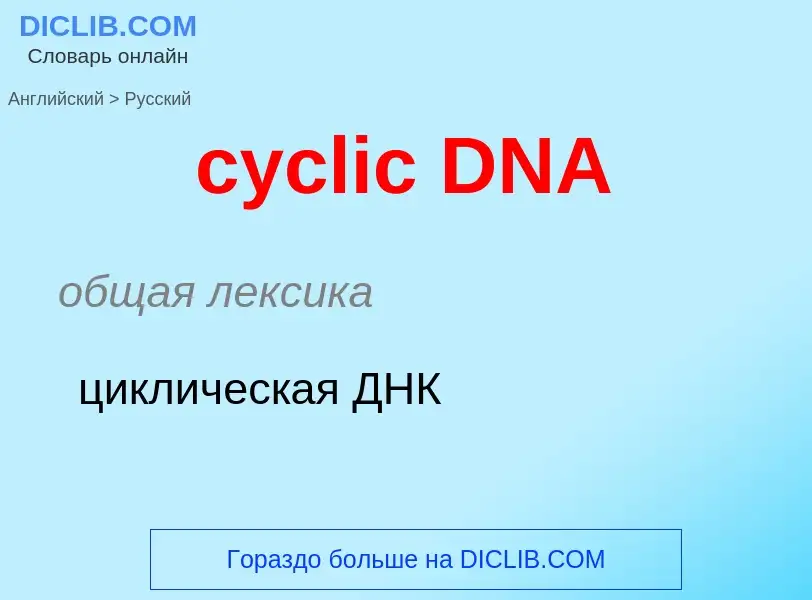Vertaling en analyse van woorden door kunstmatige intelligentie ChatGPT
Op deze pagina kunt u een gedetailleerde analyse krijgen van een woord of zin, geproduceerd met behulp van de beste kunstmatige intelligentietechnologie tot nu toe:
- hoe het woord wordt gebruikt
- gebruiksfrequentie
- het wordt vaker gebruikt in mondelinge of schriftelijke toespraken
- opties voor woordvertaling
- Gebruiksvoorbeelden (meerdere zinnen met vertaling)
- etymologie
cyclic DNA - vertaling naar russisch
общая лексика
циклическая ДНК
математика
циклический порядок
Wikipedia

cAMP receptor protein (CRP; also known as catabolite activator protein, CAP) is a regulatory protein in bacteria. CRP protein binds cAMP, which causes a conformational change that allows CRP to bind tightly to a specific DNA site in the promoters of the genes it controls. CRP then activates transcription through direct protein–protein interactions with RNA polymerase.
The genes regulated by CRP are mostly involved in energy metabolism, such as galactose, citrate, or the PEP group translocation system. In Escherichia coli, cyclic AMP receptor protein (CRP) can regulate the transcription of more than 100 genes.
The signal to activate CRP is the binding of cyclic AMP. Binding of cAMP to CRP leads to a long-distance signal transduction from the N-terminal cAMP-binding domain to the C-terminal domain of the protein, which is responsible for interaction with specific sequences of DNA.
At "Class I" CRP-dependent promoters, CRP binds to a DNA site located upstream of core promoter elements and activates transcription through protein–protein interactions between "activating region 1" of CRP and the C-terminal domain of RNA polymerase alpha subunit. At "Class II" CRP-dependent promoters, CRP binds to a DNA site that overlaps the promoter -35 element and activates transcription through two sets of protein–protein interactions: (1) an interaction between "activating region 1" of CRP and the C-terminal domain of RNA polymerase alpha subunit, and (2) an interaction between "activating region 2" of CRP and the N-terminal domain of RNA polymerase alpha subunit. At "Class III" CRP-dependent promoters, CRP functions together with one or more "co-activator" proteins.
At most CRP-dependent promoters, CRP activates transcription primarily or exclusively through a "recruitment" mechanism, in which protein–protein interactions between CRP and RNA polymerase assist binding of RNA polymerase to the promoter.


